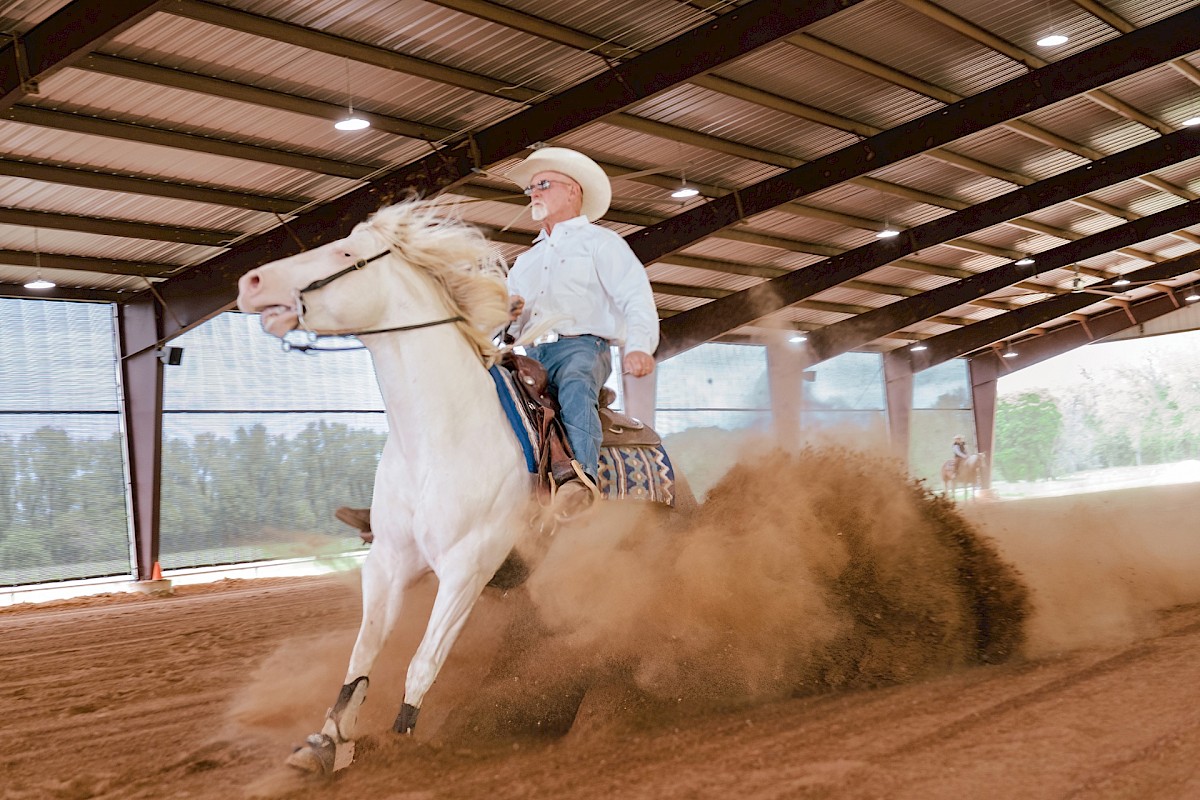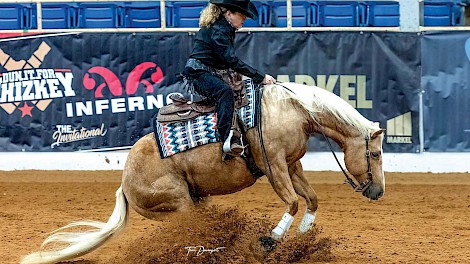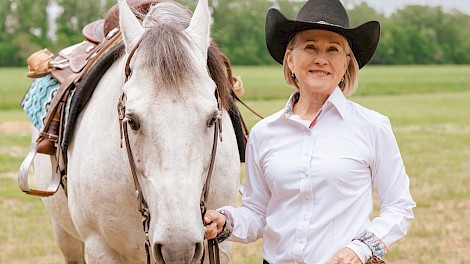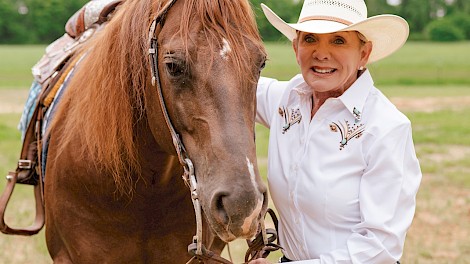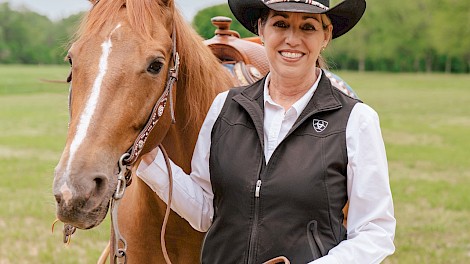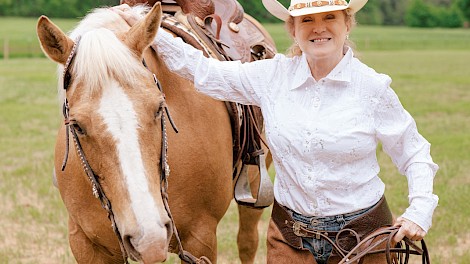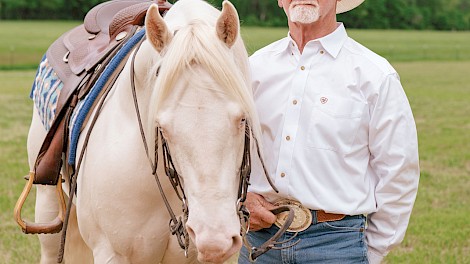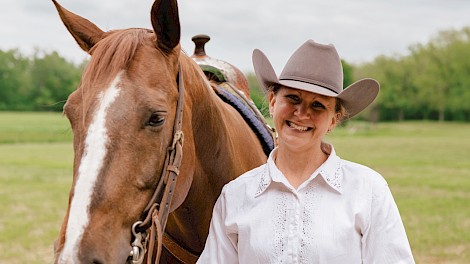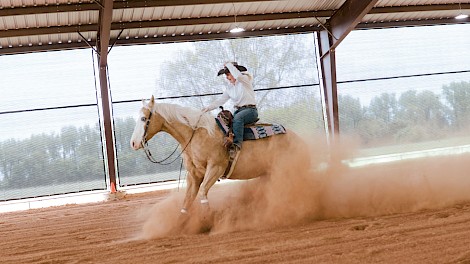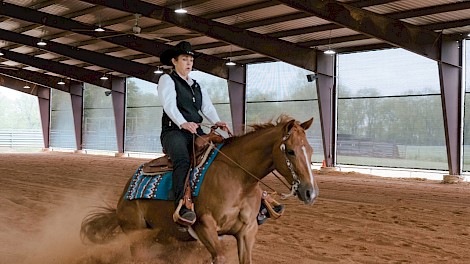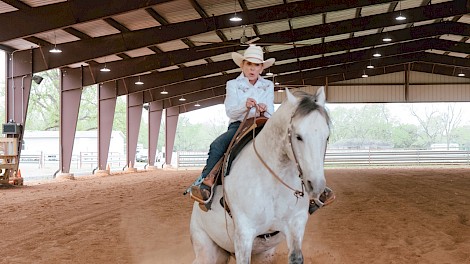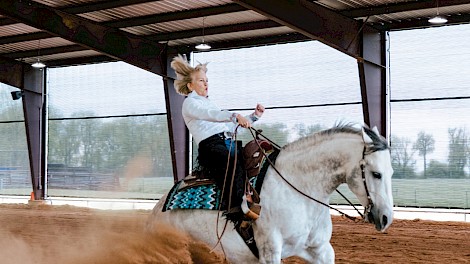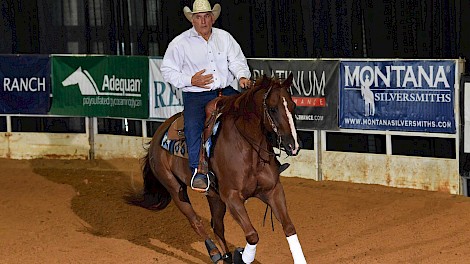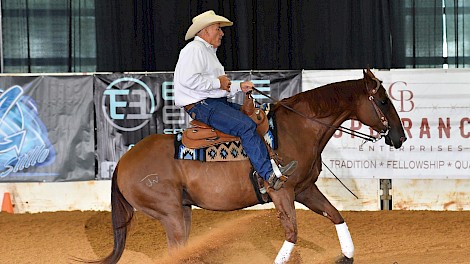Make it Rein
Throughout history, cowboys have tended cattle beginning at sunrise and ended the day covered in dust from head to toe. The horses, though exhausted from the long day, would have gladly continued to ride the range. After a dinner around the campfire, cowboys and ranch hands longed for a hobby more entertaining than the monotony of the workday.
Putting their horsemanship to good use, these fun-loving cowboys invented their own kind of entertainment. They took the normal daily maneuvers of their horses and turned them into healthy competition. After all, the majority of the horses’ waking hours were spent traveling the vast countryside, cutting and herding. All that time together firmly established a close bond between horse and rider. With just a simple movement in the saddle or a gentle pull of the reins, cowboys could get their horses to spin, move from side to side, run in a smooth motion, and stop on a dime. They took their unique skills and began competing based on the abilities of each horse and rider. This became quite the evening revelry.
This competitive tradition of the Old West has become known as reining. Keeping close to its roots, reining is a sport where riders continue to guide their horses through intricate patterns of spins, circles, and sliding stops. The popularity of this western performance horse industry is at an all-time high due in part to the television series, Yellowstone, whose writer, Taylor Sheridan, is himself a reiner and horse owner. When competing in the arena, the elite skills of riders and the athleticism of horses are put to the test. To see the rider atop the horse, it often appears to the spectator that the rider is just sitting in the saddle and the work is left to the horse. However, the rider, making the slightest unseen movements with his legs or hands, secretly but confidently controls the horse. After the completion of the pattern, the rider is given a score from the judges on how well the rider executed all the maneuvers. The goal is to make it look effortless even though that is far from reality.
Founded in 2007, the Four States Reining Horse Association (FSRHA) serves the Ark-La-Tex region. Today, the Texarkana chapter has six active riders: Cindy Simmons, Kahlayah Rehkopf, Linda Lilly, Martha Prieskorn, Jennifer Cassel, and Joe Hensley. Each reiner is quick to introduce their horses as team members as well. The team members of the equine species prefer to go by their barn names, Sophie, Reba, Whiz, Earl, Cici, Jay, Mac, and Casper. The horses are registered Quarter Horses and have impeccable pedigrees. They are magnificent animals with shiny coats, strapping muscle tone, and personalities to match their highly skilled riders.
The human team members smile and get a little emotional when they speak about the man responsible for bringing them all together. In 2009, Richard Hampton, known to the Texarkana group as quite the horse whisperer, took over running and organizing shows for FSRHA and always had significant help from his reining friend, Joe Hensley. Hensley, along with Linda Lily, are at the helm of the two sponsored shows the Four States Reining Association sponsors. Most of the riders have been riding horses their entire lives, but some were unaware of the sport of reining until Richard introduced them. Knowing who could ride a horse, who was teachable, and who had a competitive spirit, Richard expertly formed his reining team. “I like to say that Richard trained horses and people,” one rider said with a grin. He trained the horses and the riders in the local reining group, resulting in the group traveling to competitions where they won trophies, plaques, and money. He encouraged the team, shared tricks of the trade, taught life lessons, and had a special relationship with all the reining horses. In return, the horses reciprocated the affection of their leader.
Reiner Jennifer Cassel smiled as she shared her memory of realizing Richard was indeed a horse whisperer. She explained, at one time, her relationship with her horse, Jay, was strained, to say the least. Jay was born a stubborn and cantankerous beast, and Jennifer admits she didn’t have the patience the horse required. After a reining competition went poorly, Jennifer said her patience had worn thin. “I looked at the horse and yelled, ‘What? What do you want?’” Richard happened to be standing a few yards away. “If I’m lying, I’m dying,” Jennifer said. “Immediately after I screamed at him asking what he wanted from me, Jay immediately walked right over to Richard, stood beside him, looking back at me as if to say that Richard was what he wanted and needed.” Richard smiled and said, “May I help you?” Jennifer relented and gave Jay’s training (and hers) over to Richard; the rest is history. Jay and Jennifer have become two peas in a pod thanks to the expert training of Richard and his genuine love for horses. In fact, all the team’s reining horses excelled under Richard’s watch.
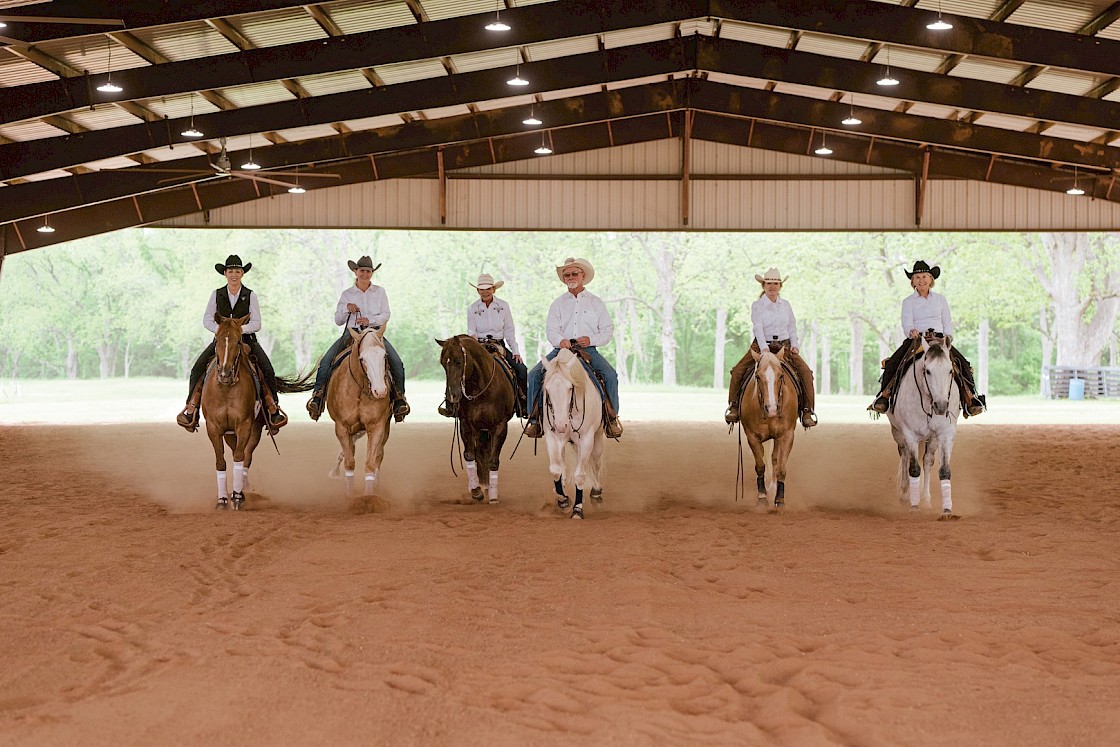
The reining team recently traveled to Tulsa, Oklahoma, for the National Reiner’s Breeder’s Classic, which is the second largest reining show in the world, paying out over $25 million in the past 25 years. There were 1,600 horses and riders who entered the competition. According to the riders, the horses become keenly aware when it is their time to shine. They get a sudden burst of adrenaline and have a heightened awareness of every move their rider makes. The riders shift their weight ever so slightly in the saddle, and the horse knows to change leads to go another direction. The rider attempts to move the reins as little as possible to guide while still being in control, which is a difficult balance to strike. The horses are aware of the patterns they have been trained to run in the arena, but they rely on their riders to be in ultimate control. In fact, the reining rule book states, “To rein a horse is not only to guide him but also to control his every movement. The best reined horse should be willingly guided.” To succeed in reining, many hours of training are required as well as an ongoing bond between horse and rider.
The Texarkana team practices every Sunday afternoon at an arena built by Linda and Mike Lilly. Mike is tirelessly working to get the consistency of the dirt just right and is always there to drag the arena to smooth it out for the group. Everybody has a job on this reining team and is proud of it. It takes effort from trainers, riders, spouses, and horses to make what was once a hobby become a show this group loves to take on the road.
The Four States Reining Association members lost their beloved trainer in October 2022. Richard is a tremendous loss to the group as they are trying to move forward without his natural skill and expertise. They have found a new trainer in Ty Pole, who travels from his home in Gainesville, Texas, to work with the group every couple of months. They are so thankful for Pole’s expert coaching abilities and the time he can spare to work with them. But they all echo that Richard is never far from their minds. Richard taught them so much about the details of the sport, but he also left them with a genuine love for one another.
As for the horses, Robert Redford said it best in the movie The Horse Whisperer when he was asked if he helped people with horse problems. The movie legend humbly responded, “I help horses with people problems.” That will be the legacy of Richard Hampton, and his team will forever be indebted to him for it. And so, the Texarkana chapter of the Four States Reining Horse Association continues to rein for the sheer love of the sport and competition but also for the memory of the man that seemed to know that they all needed each other… horses included.
For more information visit Four States Reining Horse Association on Facebook, or call Joe Hensley at 903-924-0428.

